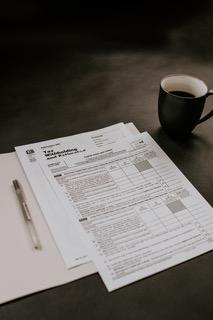
Time to Consider a Roth IRA
By: Kate Hennessy
This year my husband and I are considering converting a portion or all of a tax-deferred rollover IRA to a Roth IRA. We’ve had discussions with our accountant about the benefits of doing the conversion this year and will be assessing the impact of doing so on our taxable income. We are making a bet that tax rates will increase over the next 20+ years (our time horizon to retirement), as such we’d rather lock in and pay taxes on the income now at our current tax rate. In addition we live in the state of Illinois, which is one of three states that does not charge a tax on retirement income. It’s unknown if the state will tax retirement income in the future. We are not alone, the majority of retirement assets in the U.S. are held in tax-deferred accounts (employer 401k plans, traditional IRAs) which allow you to defer paying taxes on the growth of your investments until you need to withdraw the funds. Because the majority of our retirement assets are tax deferred, converting a portion to a Roth IRA will allow us to reduce our tax burden in retirement.
So, what is the difference between a traditional and Roth IRA? Let’s start with the basics - a traditional IRA allows people to receive a tax deduction for making contributions to a retirement account. The dollars grow tax deferred until you withdraw them at retirement; withdrawals are then taxed at the individual’s income tax rate in retirement. In contrast, there is no tax-deduction for making a Roth IRA contribution. However, the dollars grow tax free and withdrawals are tax free in retirement.
I remember when the Roth IRA was created because my Dad encouraged me to open an IRA. Here’s a fun fact – the Roth IRA was created by the Taxpayer Relief Act of 1997 and is named after Senator William Roth, Jr. of Delaware, who sponsored the legislation.
Is a conversion to a Roth IRA right for you and if so, what is the cost of doing so? Well, if your income is relatively low this year compared to other years, and you believe tax rates may increase in the future, now is a good time to convert to a Roth IRA. But it comes at a cost because you’ll need to pay taxes this year on the “income.” Income taxes need to be paid on the amount you convert and your tax liability is based on the taxable income generated by the conversion and your applicable tax rate.
So, how do you calculate your tax owed on the conversion?
Say you are in the 22% tax bracket and you convert $80,000 of Roth dollars, your income for the year will increase by $80,000.
This will move you to the 24% tax bracket and now a portion of your income will be taxed at a higher rate as a result of the conversion.
Diversifying your portfolio across tax-free (Roth IRA), tax deferred (Traditional IRA/401k), and taxable (brokerage) accounts can pay off in the long run. If you fund your future entirely with tax-deferred investments you’ll create a heavy tax burden in retirement. If your income is relatively low this year and you believe tax rates may increase in the future, now is a good time to convert your tax deferred dollars to a Roth IRA.
We can help you decide if now is the right time for you to make a Roth conversion.

